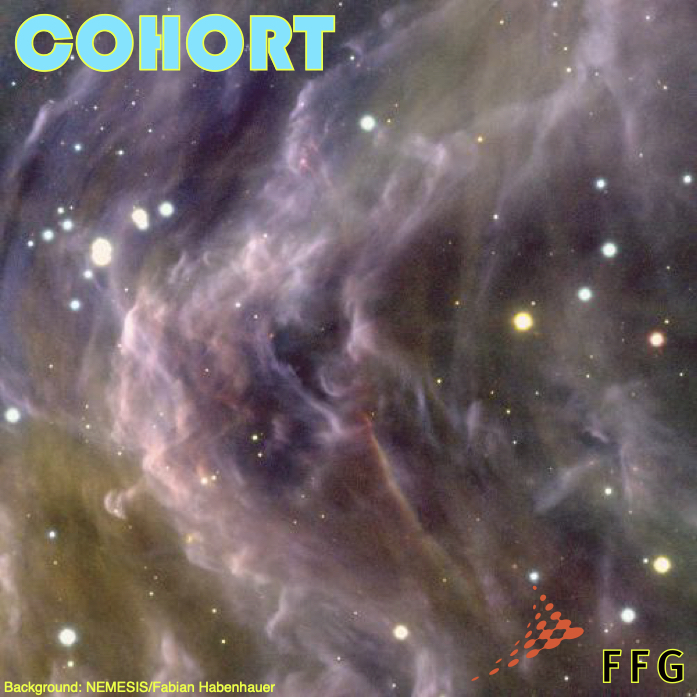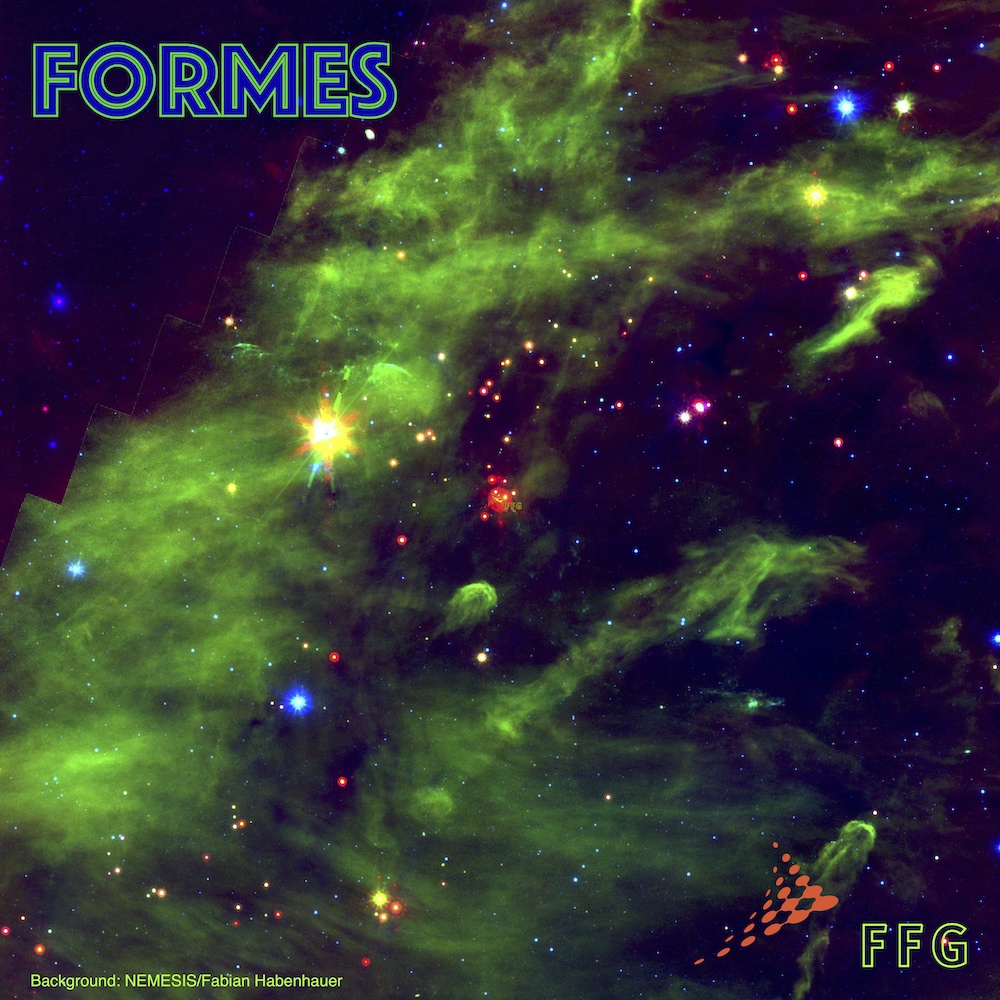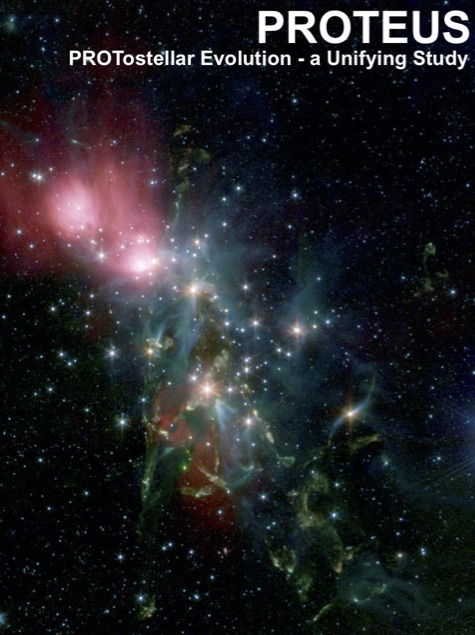
Novel Evolutionary Model for the Early stages
of Stars with Intelligent Systems (NEMESIS)
Novel Evolutionary Model for the Early stages of Stars with Intelligent Systems (NEMESIS) is a H2020 project that has the ambition to reshape our understanding on the formation of stars by employing artificial intelligence and machine learning methods to interpret the largest, panchromatic data collection of young stellar objects. NEMESIS is a collaborative project between the following institutes:
University of Vienna
Odysseas Dionatos (PI)
University of Geneva
Marc Audard (co-I)
Konkoly Observatory
Gabor Marton (co-I)
NEMESIS aims to readjust the current classification scheme and its characteristic timescales so that it is concurrent with the most recent observational and theoretical constraints. To meet these goals NEMESIS will compile the largest, panchromatic dataset comprising of all young stellar objects in nearby star-forming regions, harnessing critical information that resides in data from space missions. It will reprocess and analyze this unique dataset with supervised and unsupervised machine learning algorithms, deep learning neural networks for object detection, clustering and regression analysis of images in order to advance the analysis and interpretation beyond the current state-of-the-art. Ultimately, NEMESIS brings big data techniques and hybrid machine learning methods to systematically analyze and interpret large data volumes in order to answer some of the most persisting questions, paving the path toward data intensive science applications in modern astrophysics.

This project has received funding from the European Union’s Horizon 2020 research and innovation programme under grant agreement No. 101004141

ISSI team “Big Data in Star Formation”
Thanks to many surveys from ground and space facilities, star formation now enters the Big Data era. Gaia now provides photometry, spectroscopy, parallax, proper motions, and radial velocities for millions (up to a bit more than a billion, for some parameters) of sources that allow a much more precise determination of the populations of star forming regions, and thus, their age and luminosity. Observations at infrared and millimeter regimes (Spitzer and Herschel, IRAM, NOEMA, VLA, ALMA), which are essential for the characterization of protostars, await to be complemented with crucial information in X-rays from e.g., XMM-Newton, and the ongoing e-ROSITA all-sky survey. Nowadays higher quality and larger volumes of data, more advanced computing methods and higher computing power exist, which allow us to revisit the standard star-formation paradigm and the evolutionary scheme of young stars, using new machine learning techniques applicable to big data.
Our ISSI team brings together experts in star formation, survey data, big data analysis, and machine learning to use multi-wavelength data to derive a new evolutionary scheme for young stellar evolution.
Measuring the CO to H2 ratio in dense gas

The bulk of the dense interstellar medium consists of molecular hydrogen, however line emission from carbon monoxide provides the most accessible means for observing it. The conversion of the observed carbon monoxide to the total gas mass (dominated by molecular hydrogen) is therefore a fundamental quantity to understand the processes within molecular clouds which lead to the formation of stars and planets.
While being a key parameter quantity to weigh the mass, the ratio of carbon monoxide to molecular hydrogen remains uncertain as it can only be inferred indirectly. Higher confidence estimations come from regions with relatively low extinction at the edge of molecular clouds, however estimations of the ratio in the densest regions rely heavily on proxies and prior assumptions.
With CO to H-two RaTio (COHORT), we will assess this important quantity directly across multiple cloud locations and for a statistically significant number of clouds. The method is based exclusively on data from Herschel, Spitzer and JWST and to this end the project will harness information from the mission archives. COHORT ultimately brings together intense data mining methods, machine learning techniques and advanced statistical methods to accurately weigh the dense gas in our galaxy and beyond.
Formation and early Evolution of Stars

Our capacity to understand our position in Cosmos has been developing through the systematic recording and classification of everything that surrounds us, from plants and animals on earth to meteorites, stars and galaxies. Logical ordering of classes of objects into sequences can then unravel evolution: from the evolution of living organisms to dating the formation and evolution of Earth and the Solar System, from understanding the lifecycle of stars to the evolution of galaxies and ultimately, the universe.
With FORMES we argue that it is imperative to readjust the standard classification scheme and its characteristic timescales to reflect the much more complex processes that regulate the formation of stars. To reach this goal we will (i) combine all available data sensitive to the formation of stars for all nearby star forming regions, (ii) use new data that have the power to decisively resolve between different evolutionary phases of young stellar objects. FORMES will primarily build on data from space-based facilities such as Herschel, GAIA, Spitzer combined with data from ground-based facilities and JWST and eROSITA in the near future.
Completed Projects
Jets from Protostars (JetPro*)

Highly collimated flows of material are a ubiquitous phenomenon occurring at a wide range of cosmic scales: from Active Galactic Nuclei (AGNs) to low-mass X-ray binaries and forming brown dwarfs. The mechanisms rendering jets observable are very different for different classes of objects, it is however well established that jets occur in accreting systems and therefore are a consequence of mass transfer; in most of the cases jets are well linked to accretion disks.
Mass outflow phenomena are active during all phases of star formation and have a determining role to the development of a protostar. The role of jets is twofold: on the one hand, they remove excess angular momentum from the star-disk system, allowing further accretion to proceed; on the other hand they strongly interact with the surrounding envelope material as they propagate outwards, which leads into carving outflow cavities and eventually to the gradual envelope dispersal.
With JetPro* we aim to study the nature and role of jets and outflows in dissipating the protostellar envelope material, using specific space mission data. To this end, we will analyse a rich inventory of molecular and atomic lines excited as a result of the propagation of jets. At the same time, spectral continuum observations will permit to constrain the properties of envelopes, allowing us to study their erosion from jets. Placing the line and continuum analysis in context, we will characterize the influence of jets in determining the global star- forming timescales and final mass of the produced stars. Analysis techniques will involve excitation diagrams, shock and envelope models, along with a series of radiative-transfer diagnostic tools that will enable us to explore the possible momentum transfer pathways from jets to the surrounding envelope material.
Protostellar Evolution – a Unifying Study (PROTEUS)

To understand the formation of stars and planets it is crucial to first determine the characteristic timescales that describe each stage of protostellar growth. Classification of major phases and durations of protostellar evolution first began more than 20 years ago, based on spectral energy distributions (SEDs) whose main component is dust emission from circumstellar accretion disks and envelopes. Whilst successful in determining global properties, dust-based proxies alone cannot detail protostellar growth, as they are prone to large uncertainties. Timescales derived from protostellar population-statistics therefore remain dubious. It comes therefore as no surprise when recent, high fidelity, data indicate that our yardstick has been too long: planets seem to form much earlier than assumed and most likely synchronously to protostars.
In PROTEUS we argue that it is imperative to readjust the standard classification scheme and its characteristic timescales to reflect the much more complex processes that regulate the formation of stars. These processes include (i) the mechanical feedback through mass, energy and momentum transport, both inwards, via mass-accretion, but also outwards, via the action of jets and outflows and (ii) the influence of radiation originating from shocks along the mass- flow channels and the activity of the protostar. The PROTEUS project aims to unify a significantly improved SED classification scheme with one derived from reverse engineering the feedback processes that mainly reflect in the excitation of gas, in an effort to derive independent criteria that will describe the coevolution of all major structural components involved in star-formation. PROTEUS will primarily build on unpublished data from space- based facilities such as Herschel and Spitzer complemented by ground-based facilities, to provide a more robust classification scheme that will place stringent limits on protostellar evolution and inferred timescales.

